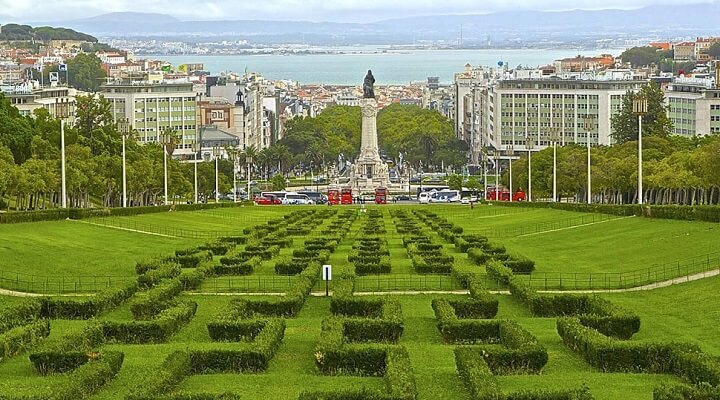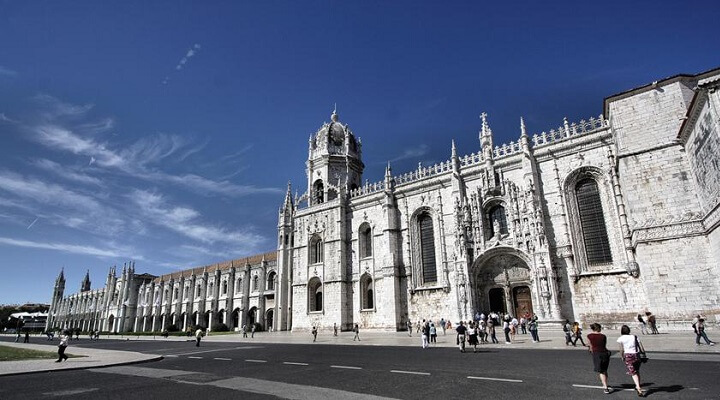The great Lisbon earthquake
In this article, we seek to clarify a little more the The great Lisbon earthquake at November 1, 1755, which ends up marking a rupture in Portugal, as well as throughout the Enlightenment Europe, ending up changing the way of living especially in Europe.
Lisbon before the earthquake

In a period in which Portugal is dependent on a completely unregulated and sloppy economy in which practically nothing produces, relying heavily on imports from several countries, subsistence agriculture and a non-existent industry, living off the gold, diamonds and sugar trade that comes from Brazil .
With a very strong dependence on the different religious institutions, which are in charge of teaching letters and sciences, which ends up stifling any kind of more enlightened actions.
Lisbon a typical medieval city with narrow, winding, dark, dirty streets, with open sewers, which had never been the subject of urban reforms, the only exception being Bairro Alto with a more rational architecture, with a grid plan, which ends for being little affected by the earthquake.
The great Lisbon earthquake

With a magnitude of about 8.9o / 9o on the Richter scale and epicenter in the Atlantic Ocean, in the geological structure of the Banco de Gorringe where the fault of the Iberian Peninsula microplate and the African plate converge
The south of Portugal was the first area to be reached and, above all, the most affected, however the same was felt in several places such as Spain, Italy, France, Amsterdam, Denmark, Norway, Baltic, Sweden, Bohemian lands, Spain, Gulf from Cadiz, the entire Northeast Coast of Morocco.
It was 9:40 am on November 1, 1755, more precisely on All Saints’ Day, the day to visit the churches, when suddenly the church bells started ringing alone 3 strong concussions separated by two brief periods of time, with a duration of about 6 minutes, subterranean alive who is inside the buildings and of course in the churches, the gas that leaves the subsoil as well as the dust blinds and chokes the populations that flee without knowing where.
Next to the Tagus, the water “disappears” retreating, leaving its bed and the bottom of the river uncovered, when waves at a speed of about 600 kilometers an hour reach the coastline, giant waves that end up flooding the entire city, its celebrated pier from Terreiro do Paço, with many tons of stone, a tragic phenomenon disappears, as never having existed there since thousands had gone there in search of shelter, since there were no buildings.
Being a holy day, which required celebrations of a religious character as well as lamps at home to the most cherished saints, the city ends up burning for about 5/6 days, which greatly contributed to the rubble, wood and remains of boats brought by the tsunami.
Marquis of Pombal
It is at this moment that what will become known as the reconstruction of Lisbon comes into action, Sebastiao Jose de Carvalho e Melo, better known as Marquês de Pombal, a politician from the low nobility, will be entrusted by King D. José I himself, in As Secretary of State, she is given full powers to manage the public farm, and of course the reconstruction of the Baixa city.
A person with a practical and analytical spirit (contrary to the spirit of the time in the country), well traveled and knowledgeable about the world, he is also a defender of Freemason principles (concept by the Vienna Freemason) and of the Enlightenment ideals, without knowing the truth, many attribute him to celebrate the phrase “bury the dead and care for the living”, when the king asked him in tears what to do.
He created field hospitals, to help the many injured and displaced, demolished buildings at risk of falling, receives an exceptional authorization from the Catholic Church to bury the dead in mass graves, this to prevent the spread of epidemics and pests, as well as bodies were also tossed to the Tagus tied to stones.
He declared martial law in Lisbon, and whoever was caught stealing in the act would be immediately hanged, in gallows quickly erected by the city, the rest of the population is prevented from leaving the city, as everyone will be needed in the process of reconstruction.
The reconstruction of Lisbon
The task of financing the reconstruction of Lisbon, comes from the increase in taxes in Brazil, the so-called “pour”, a tax that leads to the discontent of Brazilian subjects, perhaps the first steps that end up determining the independence of Brazil, in 1822, in the Portuguese bourgeoisie linked to trade, it contributes 4% on all items dispatched from customs and will also be the most benefited class, with buildings in Baixa Lisboeta.
It was now time to think of a city that could withstand future earthquakes, with wide, wide streets (for possible falls from buildings), and 2 large squares, allowing fluidity and a place of escape in the event of a disaster.
The Pombaline Cage, a wooden structure that, due to its elasticity, adapts to the movements of the soil shaken by an earthquake, a system that was tested by the military, when they marched on it simulating the shaking of an earthquake the Firewall, walls built in the top of the roof separating neighboring buildings, preventing the fire from spreading to the building next door.
Its buildings practically all the same, will have a shop on the ground floor, (street trade), a balcony on the first floor, on the other floors, chest windows, and attic rooms on the fourth floor, creating an air box for better temperature control. in the building, buildings used mainly for commerce or small factories and / or services.
Come see all this history and much more on our Tours




